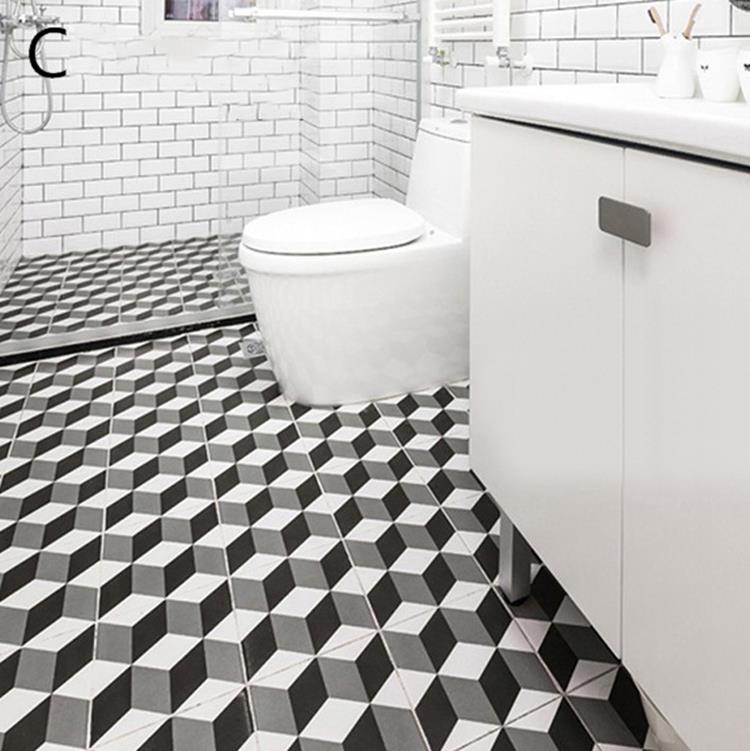Despite the fact that tile is one of the most commonly used primary building materials in our homes, many homeowners are unsure of how to tell the difference between good and bad quality tiles. As a result of a number of hearsay experiences, owners are frequently led into some misunderstandings, resulting in them spending money while receiving substandard quality or effect. The five most common misunderstandings when it comes to decorating and purchasing tiles are discussed today, as well as a reminder to stay away from lightning.
The first misconception is that Guangdong bricks must be of the highest quality available.
Purchase bricks, specifically Guangdong bricks, for your construction project. The following is a sentence that many business owners, I believe, are familiar with. Indeed, Guangdong was the first region in China to begin manufacturing ceramics, and it is still the largest producer today. Thanks to its numerous high-quality raw material resources, a steady accumulation of talents, and stringent internal control enterprise standards for ceramic tile products, it has emerged as a major hub for Chinese architectural ceramics, and its reputation is well-known around the world.
As a result of the excellent reputation of Guangdong Bricks, there are some businesses that are operating in troubled waters. Examples include manufacturers in Jiangxi, Fujian, Shandong, and other provinces registering companies in Guangdong cheap ceramic tile and claiming to be the Guangdong Brick brand, when in fact they are not.
The fact that Guangdong, due to its first-mover advantage, is more well-known than the main producing areas of building ceramics in Shandong, Jiangxi, Fujian, and Sichuan is not a proof that the quality of bricks produced in other parts of the country is lower. Because of the continuous production of major ceramic industry brands in Gao'an, Jiangxi, Tengxian, Guangxi, and other locations over the past few years, the quality of ceramic tiles produced in foreign production areas has steadily improved.
It is anticipated that as a result of this, the vast majority of owners and friends will not be compelled to purchase Guangdong bricks. Of course, if the owners and their friends are successful in their quest to obtain authentic Guangdong bricks, it would be preferable.
Misconception 2: The greater the thickness of the tile, the better the outcome.
Many homeowners and friends will believe that the thicker the ceramic tiles are, the more pressure-resistant and higher-quality they are when it comes to selecting ceramic tiles due to a lack of understanding of ceramic tiles. However, there is no correlation between the thickness of the tile and the overall quality of the tile installation in practice. Contrary to this, it is more difficult to lay thicker tiles because the thickness of the tiles increases with their thickness.
Even though thin ceramic tiles and ceramic sheets are half the thickness of traditional ceramic tiles, their product strength is equal to or greater than that of traditional ceramic tiles, and their toughness is even greater than that of traditional ceramic tiles; in terms of utility value, thin ceramic tiles and ceramic sheets outperform traditional ceramic tiles. Bricks are primarily employed in the construction of floors and the lining of walls in buildings. The flexural strength of bricks used in flooring applications is proportional to the impact force applied to them and has nothing to do with the thickness of the bricks. Thin ceramic tiles are also more space-efficient than thick ceramic tiles because they are in direct contact with the ground. When thin ceramic tiles are installed on a wall, they are small in size, light in weight, and safer to use than thicker ceramic tiles.
Because the maximum thickness of ceramic tiles cannot be greater than 13.5mm, according to the national standard, ceramic tiles with a thickness less than 13.5mm still meet the requirements of the standard for flexural strength, wear resistance, and other indicators.
Misconception 3: The whiter the brick is, the higher the quality of the brick. This is not true.
Conversely, and contrary to popular belief, the whiter the color of the tile body, the fewer impurities there are in the tile and thus a higher level of quality in the tile. This, however, is not the case at all. calcined clays, quartz cheap ceramic tiles, and feldspar are used to construct the tile, with a white raw material serving as the tile's body. As an additional step prior to firing, the raw material will be cleaned of impurities and filtered to remove some colored gold (for example, iron ions) in order to achieve an overall body that is relatively white in appearance. In part because different raw materials are used in different parts of the world, the ceramic tile bodies produced in different parts of the world have a variety of characteristics. Among other differences, the body of Guangdong brick is white in color, whereas the body of Jiajiang brick is reddish in color. As a result, because everyone uses the whiteness of the blank body to distinguish whether or not a tile is from Guangdong, and thus the quality of the tile, the owner's friends believe that the whiter the body color is, the higher quality of the tile blank is.

Misconception number four is that a color difference indicates a lack of high-quality materials.
Colorimetric aberration is a problem that many brick buyers and their friends encounter when purchasing bricks from a brick yard. Numerous people believe that this indicates a problem with the product's overall quality. In spite of the fact that chromatic aberration is an unavoidable error in tile production, it has no effect on the overall quality of the tiles that are manufactured. According to the type of ceramic tile being manufactured, the raw materials used, the temperature at which the tiles are produced, the batch size, and other aspects of the manufacturing process differ. Each batch is distinguished by a distinct color as well as a distinct color number. Unfortunately, due to the current state of manufacturing technology, this is an unavoidable problem. In addition, if the tiles are subjected to an excessive amount of water immersion, they will become discolored as well.
In order to avoid obvious color differences after paving, owners and friends should try to purchase tiles from the same batch whenever tile china possible, and they should try to see how tiles interact with one another before paving. The same is true when purchasing tiles; owners and friends should purchase 5%-10% additional shares in order to avoid having to replenish the stock in the future.
Understanding 5: After paving, there must be an empty drum, pieces of the pavement falling off or cracking, as well as other signs of poor quality.
After-installation phenomena such as drumming, falling off, cracking, and other phenomena are not always caused by poor quality issues with the product itself, but can also be traced back to poor craftsmanship on the part of the tile laying professional. Hollow tiles, no gaps in the tile paving, insufficient and uneven water, poor quality cement mortar, and a high cement label, to name a few examples, will all have a negative effect on the paving effect, with the tiles becoming hollow in the later stages of the construction process. Therefore, when the vast majority of owners and friends find themselves in this situation and need to protect their rights, they must maintain their composure and make thoughtful decisions.

